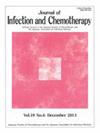影响儿童保育和教育专业人员接种流感疫苗的因素:一项全国性调查(2023-2024)。
IF 1.5
4区 医学
Q3 INFECTIOUS DISEASES
引用次数: 0
摘要
背景:流感仍然是一个重大的公共卫生问题,每年导致数百万严重病例和许多人死亡。虽然教育和儿童保育机构是病毒在社区传播的主要传播点,但很少有研究全面审查了这些环境中的疫苗接种率及其决定因素。方法:我们进行了一项全国性的基于网络的调查,以5C模型为基础,评估日本儿童保育和教育专业人员的流感知识、观念和疫苗犹豫的决定因素。采用多变量修正泊松回归、机器学习分类回归树法(CART)和网络分析等方法识别影响接种行为的因素。结果:2023年流感疫苗接种率为74.1%,2024年为78.8%。年龄较小(RR, 1.33; 95%CI, 1.04-1.70)、认为不必要(RR, 1.31; 95%CI, 1.01-1.70)、担心不良反应(RR, 1.57; 95%CI, 1.23-2.01)与始终不接种疫苗相关,而认同集体责任(RR, 0.02; 95%CI, 0.01 ~ 0.06)和认识到接种疫苗对预防感染的重要性(RR, 0.77; 95%CI, 0.62 ~ 0.95)是保护因素。CART和网络分析进一步强调,集体责任是教育和儿童保育专业人员持续接种疫苗的关键决定因素。结论:我们的研究强调了集体责任(接种疫苗以保护他人的意愿)和特定的犹豫因素在儿童保育和教育专业人员接种流感疫苗方面发挥了关键作用。针对这些决定因素的量身定制的公共卫生战略可以提高疫苗覆盖率,减少流感在高危环境中的传播。本文章由计算机程序翻译,如有差异,请以英文原文为准。
Factors influencing influenza vaccination among childcare and education professionals: A nationwide survey (2023–2024)
Background
Influenza remains a major public health issue, leading to millions of severe cases and many deaths annually. Although educational and childcare institutions are key transmission points for the spread of the virus in communities, few studies have comprehensively examined the vaccination rates and their determinants in these settings.
Methods
We conducted a nationwide web-based survey to assess influenza knowledge, perceptions, and determinants of vaccine hesitancy based on the 5C model among childcare and educational professionals in Japan. Multivariable modified Poisson regression, machine learning method of classification and regression tree (CART), and network analysis were employed to identify factors influencing vaccination behavior.
Results
Influenza vaccination rates were 74.1 % in 2023 and 78.8 % in 2024. Younger age (RR, 1.33; 95 %CI, 1.04–1.70), perceived unnecessity (RR, 1.31; 95 %CI, 1.01–1.70), concerns over adverse reactions (RR, 1.57; 95 %CI, 1.23–2.01) were associated with consistent non-vaccination, while agreement with collective responsibility (RR, 0.02; 95 %CI, 0.01 to 0.06) and recognition of the importance of vaccination for infection prevention (RR, 0.77; 95 %CI, 0.62 to 0.95) served as protective factor. CART and network analyses further highlighted collective responsibility as the key determinant for receiving vaccination consistently among educational and childcare professionals.
Conclusions
Our study highlights that collective responsibility (willingness to get vaccinated to protect others) and specific hesitancy factors play a pivotal role in influenza vaccination uptake among childcare and educational professionals. Tailored public health strategies addressing these determinants may enhance vaccine coverage and reduce influenza transmission in high-risk settings.
求助全文
通过发布文献求助,成功后即可免费获取论文全文。
去求助
来源期刊

Journal of Infection and Chemotherapy
INFECTIOUS DISEASES-PHARMACOLOGY & PHARMACY
CiteScore
4.10
自引率
4.50%
发文量
303
审稿时长
47 days
期刊介绍:
The Journal of Infection and Chemotherapy (JIC) — official journal of the Japanese Society of Chemotherapy and The Japanese Association for Infectious Diseases — welcomes original papers, laboratory or clinical, as well as case reports, notes, committee reports, surveillance and guidelines from all parts of the world on all aspects of chemotherapy, covering the pathogenesis, diagnosis, treatment, and control of infection, including treatment with anticancer drugs. Experimental studies on animal models and pharmacokinetics, and reports on epidemiology and clinical trials are particularly welcome.
 求助内容:
求助内容: 应助结果提醒方式:
应助结果提醒方式:


